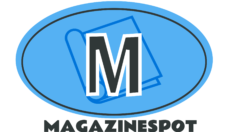Perhaps you envision a contortionist bent over touching his toes or a yoga teacher bending elegantly into a series of intricate poses. But flexibility doesn’t mean bending like a pretzel. It just refers to the facility with which you can move any joint through its full range of motion. Flexibility makes it possible for you to conduct the most minute daily activities; for example, bending down to tie your shoelaces or carrying heavy bags of groceries from the store, without straining. Beyond comfort, maintaining flexibility can protect one from injuries and reduce muscle stiffness and joint aches.
Not improving flexibility cannot be intimidating, though. With the right stretches, regular practice, and professional guidance such as Osteopath Dover, you will be able to enhance your range of motion and increase your mobility in general. Osteopaths focus on holistic treatments that enhance muscle function and promote joint health. Flexibility, therefore, will become a part of your life. Start incorporating exercises for flexibility in your routine for a more agile and pain-free lifestyle.
Try Foam Rolling for Flexibility
The foam roller will improve flexibility and promote blood flow in your muscles, yielding the same benefits as traditional stretching. For example, rolling your thigh up and down on a foam roller for three to four repetitions and then gently side-to-side will release tension in tight muscles. Other tools that aid self-myofascial release include massage sticks, balls, or even percussion devices. Relax and loosen the tight tissues for five to ten minutes each day.
Opt for Dynamic Stretching Before Activity
Dynamic stretches are those that move through a joint’s natural range of motion without holding the position. For example, 15-leg swings allow your legs to swing freely back and forth, gradually increasing mobility. Other dynamic stretches such as hip openers, butt kicks, and Frankenstein walks are great for warming up without straining.
Incorporate Deep Breathing into Your Stretching Routine
Focus on your breathing during stretches and exercises to enhance your overall experience. Deep breathing can relax muscles, making it easier to ease into stretches and release tension. Controlled breathing can also calm the body and lower stress, which supports improved flexibility. With every stretch, take slow, deep breaths to encourage relaxation and improve your stretch quality.
Stay Hydrated for Optimal Flexibility
Proper hydration plays a key role in maintaining muscle flexibility. Dehydrated muscles tend to feel tighter, which can limit your range of motion. Drinking water keeps your joints lubricated and ensures smoother movement. If possible, opt for electrolyte-rich fluids to help prevent muscle cramps and support muscle function during your flexibility routine.
Begin with Gentle Movements
Start by being gentle and basic with flexibility exercises. Work larger muscle groups like your hamstrings, calves, shoulders, and neck because those tend to hold the most tension. Be gentle to avoid overstretching, and always remember that a good stretch feels challenging but should never be painful. The more basic the movement, the easier it will be for beginners; consider seated calf stretches, standing chest stretches, or arm circles.
You May Also Read This: Innovative Techniques for Long-Term Neck Pain Relief
Practice Yoga for Flexibility
Stretching, deep breathing, and mindfulness are all part of yoga practice, which indeed can be beneficial for staying flexible. It caters to various fitness levels, whether it’s slower movements or sequences. Successive yoga sessions might improve flexibility, balance, and a stronger mind-body connection.
Consistency Always Is the First Priority End
The secret to increasing flexibility is consistency. Results are usually noticed even with short amounts of time – five minutes per day. Deep breaths and hydrating go along with stretching. Patience will help avoid an injury, listening to the body.
Target Your Tight Areas
Concentrate on muscles that feel tight. Challenging stretches often indicate where your body needs attention. For example, if your hamstrings are flexible but your hip flexors and calves are tight, prioritise those areas. Desk jobs can tighten your chest and hip muscles, so stretching these areas can counteract the strain. If you’re already highly flexible, focus more on strengthening the muscles supporting your joints.
Conclusion
Improving flexibility does not need to be an arduous process. Simple, consistent practices can make you feel more limber and release muscle tension. Whether it’s through yoga, gentle stretches, or staying hydrated, these steps contribute to a more mobile and healthier body.






